Sound artist Rob Mackay and a group of academics, artists, scientists and technicians recently installed a streaming device at Cerro Pelón in the mountains of Mexico, one of four monarch butterfly sanctuaries open to the public.
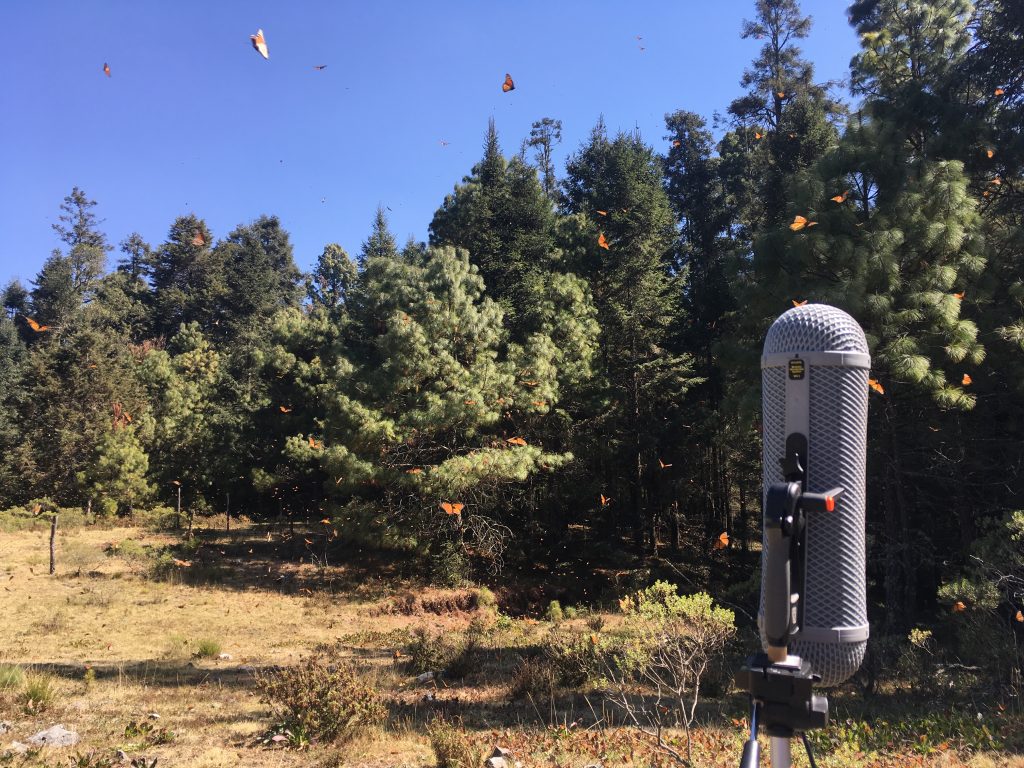
Eavesdropping on monarch butterflies at Cerro Pelón. Photo by Rob Mackay
The result of that collaboration is that anyone, anywhere, can eavesdrop on the remote stretch of mountain plain where millions of monarch butterflies gather each fall to wait out the winter. You don’t even have to make the hike to 11,000 feet. Try it at this link on just about any browser but Safari, which seems to block the stream’s ability to load.
You’re likely to hear birds chittering, flies humming, the occasional whir of an airplane or engine, and the sometime sound of monarch butterflies moving through thin mountain air. The live stream makes for soothing, natural white noise and a welcome soundtrack for work, play or relaxation. It also helps scientists monitor changes over time which allows for useful assessment of the ecosystem’s health.
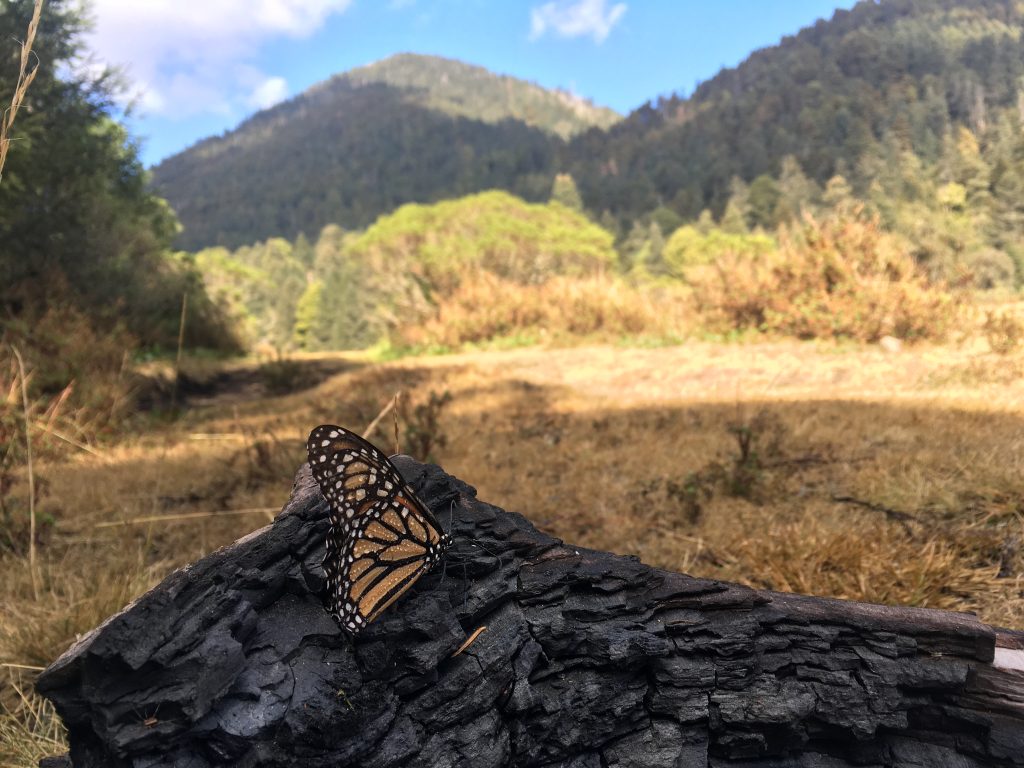
Monarch butterflies are the stars of the show at UNESCO’s Biosphere Soundscape project at Cerro Pelón, but the sounds of other creatures also contribute to the soundtrack . Photo by Rob Mackay
The project is an extension of Biosphere’s Soundscapes, an acoustic ecology initiative run in collaboration with UNESCO’s 669 biosphere reserves in 120 countries. The program aims to inspire communities to listen to the environment and explore the value of sound as a measure for environmental health, an idea posed in 1962 by Rachel Carson. Her landmark book, Silent Spring, put forth the notion that natural sounds can serve as indicators of environmental health. At the time of its publication, the book detailed the use of pesticides that were massively killing songbirds, a phenomenon that would some day lead to a “silent spring.”

Rob Mackay
Mackay, a composer, sound artist and senior lecturer at the University of Hull in East Yorkshire, England, spearheaded the project at Cerro Pelón.Mackay tripped upon monarch butterflies in March of 2015 when he was invited to present at the Mexican National Centre for Music and Sonic Arts in Morelia.
“One of my ecology colleagues mentioned to me that the monarch butterfly overwintering grounds were very close to Morelia,” Mackay said by email. “He told me about their amazing migration and life cycle. I was immediately intrigued and went online to do a little more research. A few links mentioned the sound made by their rushing wings, so I was inspired to try and capture the sound.” On that trip, Mackay visited El Rosario, the most frequently visited sanctuary in the Monarch Butterfly Biosphere Reserve.
Later in 2015 at a conference, Mackay met Grant Smith from SoundCamp, the people who supply the streamboxes for streaming soundscapes in real-time over the internet. He also met Leah Barclay, a sound artist who oversees the Biosphere Soundscapes project.
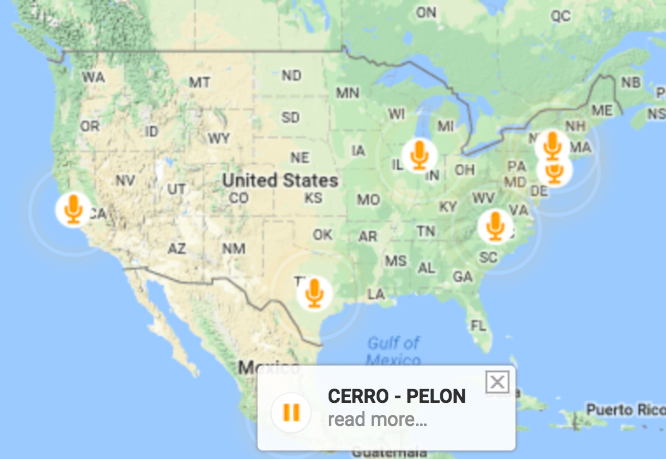
The Biosphere Reserve Soundscape at Cerro Pelón is one of two streams in Central America featured on the Locus Sonus Soundmap. There are another eight streams in North America.
Mackay proposed installing a streambox in the Cerro Pelón colony to help scientists monitor the ecosystem there and engage people around the world with monarch butterflies through sound. He ran the idea by monarch butterfly expert Lincoln Brower in Virginia. Brower blessed it.
Mackay said the project accelerated once Pablo Jaramillo, a professor at the National Autonomous University of Mexico in Morelia, got involved. Jaramillo, as the local scientific advisor and contact, was able to rally forces and put the team in touch with arborists at Cerro Pelón as well as Franco Ramirez. Ramirez managed the practically impossible task of arranging an internet connection to the remote mountain village of Macheros, population 350. Solar panels also had to be installed to provide electricity.
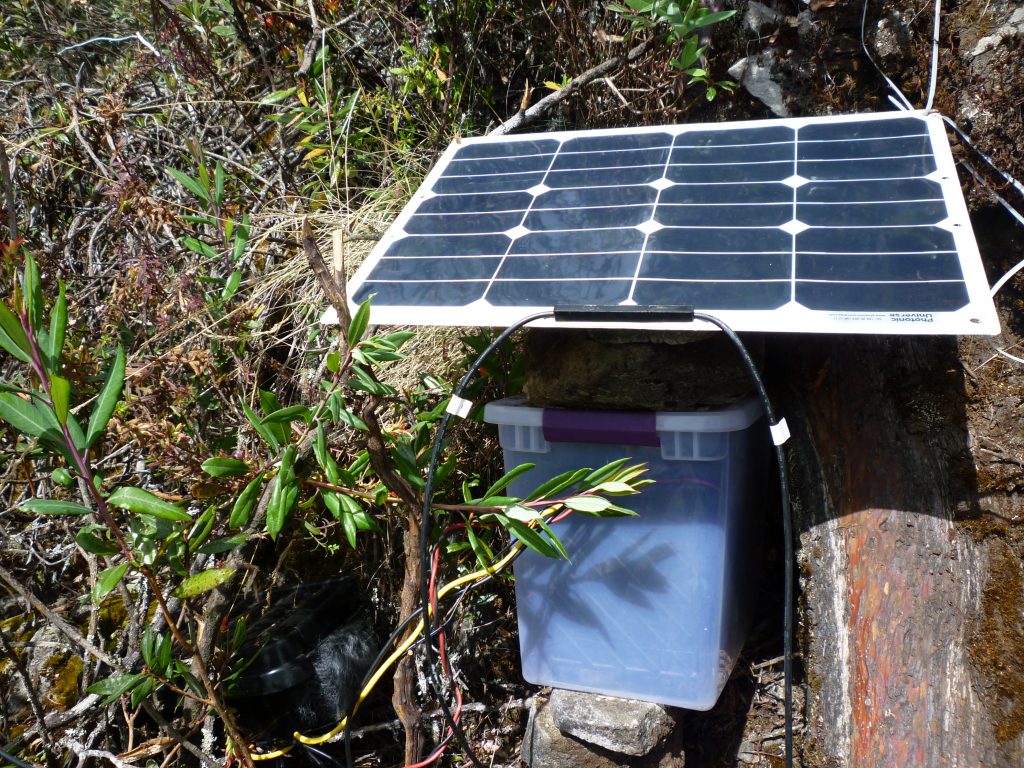
How the magic happens: stream box and solar panel. Photo by Rob Mackay
A five-day trip to Cerro Pelón in January got the job done. It also produced enough material for the collaborators to assemble an album/DVD of the process and several spontaneous musical performances and poetry readings spawned by the adventure.
Once the live stream was activated, Jaramillo shared the news with Chip Taylor, founder of Monarch Watch at the University of Kansas, the organization that orchestrates the wildly popular monarch butterfly tagging program for citizen scientists across the Americas. Taylor shared the development on the DPLEX list, an email listserv that reaches about 800 monarch butterfly followers including scientists, citizen scientists, hobbyists and commercial butterfly breeders.
Streaming the sounds of butterfly wings poses many technical challenges–special pre-amplification to the streamboxes, arranging reliable, affordable solar power and keeping the internet connection up and running. As the DPLEX community swarmed the sound map site, the connection failed, perhaps overwhelming it. But by week’s end, thanks to Team Monarca, it was back up.
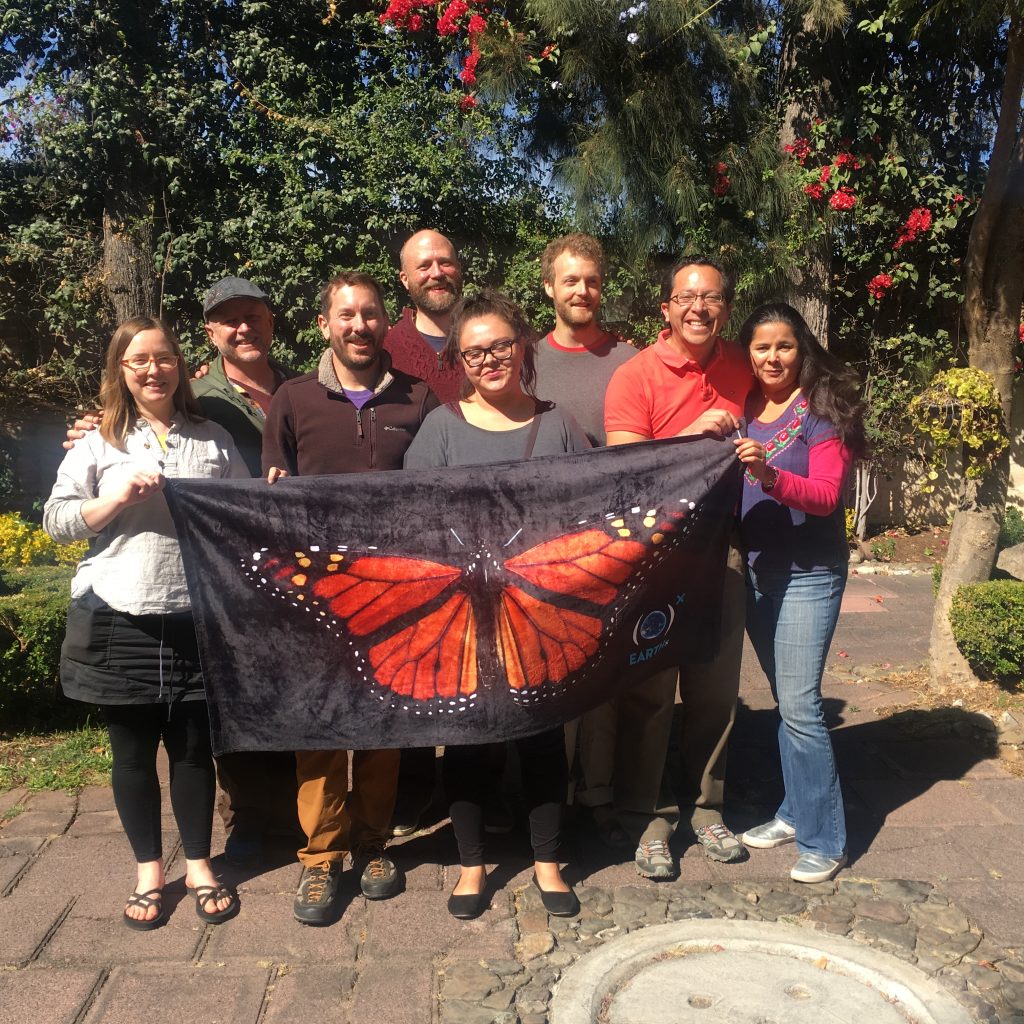
Thanks to the hard work of Team Monarca, we can all eavesdrop on Cerro Pelón. L-to-R, Alice O’Rourke, Jeff Schults, David Blink, Rob Mackay, Jessica Rodriguez, Benny Talbot, Pablo Jaramillo, Liliana Arroyo –Photo by Rob Mackay
How does acoustic artist Mackay describe the unique, subtle sound of millions of butterflies wings moving and what musical instrument would he use to replicate it?
“A little like a crackling fire, or crape paper being rustled,” said Mackay. Replicating the sound with instruments would be a challenge, but “working with a local choir and getting people to replicate the sound using their voices and bodies” might come close. “Perhaps several rain sticks and other percussion.”
UPDATE: Mackay and Jaramillo advise patience with the stream, as it is still in the pilot stage. If you click on the link and hear nothing, try again later.
Related posts:
- How to track the monarch butterfly migration from your desk
- Monarch butterfly and Pollinator Festival set October 20 -22 in San Antonio
- Butterfly bonanza: Monarch netted on Llano River tagged in Oklahoma
- How to Tag a Monarch Butterfly in Six Easy Steps
- What does climate change mean for Monarch butterflies?
- New study: late season nectar plantsmore important than milkweed to Monarch migration
- Should You Bring in a Late Season Caterpillar into Your Home?
- How to Tell Queens from Monarchs
- How to Raise Monarch Butterflies at Home (First of Two Parts)
- Coming soon: Grupo Mexico copper mine in heart of Monarch butterfly roosting sites?
- Will the Monarch Migration Become Extinct?
Like what you’re reading? Follow butterfly and native plant news at the Texas Butterfly Ranch. Sign up for email delivery in the righthand navigation bar of this page, like us on Facebook, or follow us on Twitter, @monikam.

The Cerro Pelón location is not currently showing on the map.
Strange, as it was working this morning up to when I posted the article. Wonder if increased traffic to the sound map site knocks it out of commission? Will check with the organizers. Gracias.
The project is still in its pilot stage. The 3G signal on the mountain is rather patchy and can be intermittent at times. We’re working on a more robust, long-term solution over the coming months. Each time the stream has gone down, it’s come back up again, so do keep checking back. It’s sounding beautifully active for the dawn chorus there at the moment.
Here is a big thank you, to team Monarca for all their work in bring this incredible experience of nature to the world and thank you also for mentioning Rachel Carson who was a true pioneer for environmental conservation and protection.
Thanks for your kind words! We’re going to be continuing to work on this project, improving the reliability of the stream, and adding more scientists and artists to our team. We’ll be going to the reserve again in March, so we can keep people updated.
I raised 61 Monarchs summer 2017. This summer I have raised 215 and have ten (10) more to hatch in Duluth, Mn.
I did my research paper on Monarchs in college last year. I learned that ONLY 5% survive in the wild.